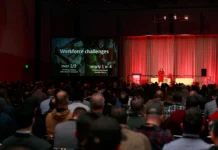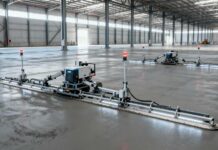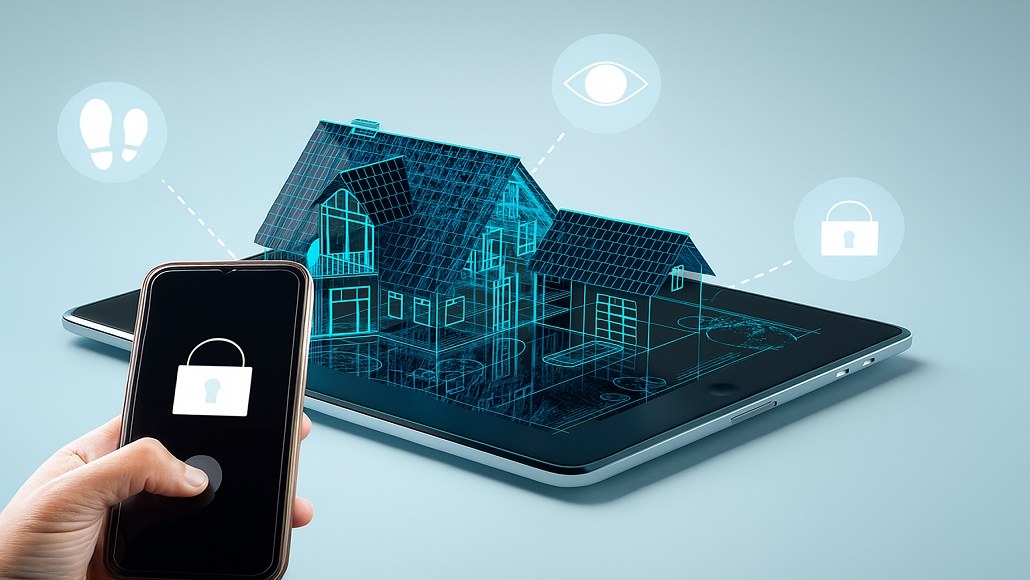Sourcing and Innovation: Smart Home Security & Remote Management via Cloud Platforms
With urbanization increasing throughout the Asia-Pacific region, there is a growing demand for innovative security solutions. The use of cloud technology in smart home security systems is transforming the way that homeowners control their homes and keep their loved ones safe. Sourcing and innovation: intelligent home security & distant administration through cloud platforms provides unmatched convenience, including remote lock control, real-time observation, temporary user access, and rigorous adherence to local privacy standards. This paper discusses the revolutionary effect of cloud-integrated security systems, predicts future developments, and examines how companies within the industry can evolve to remain in front of an increasingly fast-moving environment.
The Rise of Smart Home Security
As per a report by Statista, the Asia-Pacific Smart Home market is projected to reach US$174.0bn in 2025. Revenue is expected to show an annual growth rate (CAGR 2025-2029) of 9.55%, resulting in a projected market volume of US $250.6 bn by 2029, with demand very much fueled by the need for security solutions. Homeowners are more and more seeking ways to increase their safety and security through technology. These solutions are increasingly centred around cloud-based technologies, which allow customers to monitor their properties in real time from anywhere in the globe and remotely regulate access to their houses.
The ability to remotely operate locks and access points is one of the most alluring features of cloud-based security systems.Owners can lock or unlock doors through mobile apps, which reassures them when away from home. This would be particularly convenient for owners who could have to let in visitors, like service workers or guests, without being present themselves. Limited user access can be provided so that guests can come and go during limited time periods, increasing convenience and security.
Further, cloud-integrated home systems also allow homeowners to keep an eye on their properties in real-time video feed and alert. Higher motion detection technology can also inform users about odd activity, allowing them to stay informed about what is occurring on their properties. In this manner, sourcing and innovation: smart home security & remote management via cloud platforms allows homeowners to be in charge of their security in a manner that was heretofore unimaginable.
Compliance with Privacy Standards
With increasing demand for smart home security solutions, there is a growing need to comply with local privacy standards, particularly in the Asia-Pacific region, where data protection laws are tightening. India and Indonesia are imposing regulations on how personal data is collected, stored, and used, so security providers have to put privacy high on their agendas.
For example, India’s Personal Data Protection Bill stipulates the requirement that corporations keep their data secure and be open about how they manage user data. Indonesia is also moving forward with its digital economy roadmap, which makes specific provisions for citizens’ data protection. Cloud security products have to be in compliance with these laws in order to build consumer confidence and adhere to the law.
Here, intelligent home security solutions have to integrate strong security features, like end-to-end encryption, secure authentication of users, and timely software patches, to secure user data. By following these privacy guidelines, businesses not only adhere to regulatory compliances but also generate customer loyalty that seeks data security in opting for smart home solutions.
Upcoming Developments in Smart Home Security
Looking ahead, there are a number of important trends that will influence the development of sourcing and innovation: smart home protection & remote control through cloud platforms. Perhaps the most important trend is the rise of artificial intelligence (AI) within security systems. AI-based algorithms can review security data patterns, enhancing threat detection and response times. Such systems are able to distinguish between regular activities and possible security violations so that homeowners can take action more efficiently to warnings.
In addition, the expansion of the Internet of Things (IoT) will continue to increase the capabilities of smart home security. With an increasing number of devices connected to one another, homeowners are able to enjoy an integrated security system. For instance, smart locks, door cameras, and alarms can coordinate to offer holistic coverage and visibility into security incidents. With this interconnectivity, companies will be able to deliver more advanced solutions that not only secure a home but also provide seamless user experiences.
Another expected trend is the growth of subscription security services. Most consumers might enjoy the convenience of subscribing to a service that covers hardware, software, and maintenance. Such a model will lower the initial cost of installing a smart home security system but deliver users continuous updates and upgrades.
Integrating Sustainable Materials in Construction
As smart home security systems come of age, the building sector is also turning towards sustainability. India and Indonesia are incorporating green materials like bamboo, recycled glass, and reclaimed wood into contemporary building. This focus on sustainability fits into worldwide environmental targets and increases the desirability of smart homes.
Bamboo’s quick growth and renewability make it a prime candidate for building. In India, efforts to increase the use of bamboo are underway, with builders and architects looking to add the ecologically friendly material to contemporary designs. Indonesia is also making use of reclaimed wood to design striking interior spaces while reducing waste. Using these green materials not only minimizes environmental footprint but also adds to the overall quality and esthetics of smart homes.
The focus on sustainable building materials comes on the heels of increasing need for smart home technology. Buyers are looking for homes that are not only technologically sophisticated but also green. Therefore, builders who specialize in bringing together eco-friendly material and smart home technology will be well-placed to address consumer needs and stand out in the market.
Evolving Multifunctional Spaces
With ongoing changes in the dynamics of contemporary living, Asian homes are transforming to have spaces that integrate work, play, and family life into multipurpose areas. The COVID-19 crisis has hastened this trend, with increased numbers of people working from home and looking for spaces that support different uses within small living spaces.
Smart home security systems can also be central in such multifunctional areas. An example is a home office that also serves as a guest room, where the security systems used must serve both work and recreational purposes. Cloud-connected systems provide the best flexibility to be able to monitor and manage access to such rooms, guaranteeing security whether the room is being utilized for work or recreation.
As cities continue to grow more crowded, the need for flexible home designs will grow as well. Homeowners will seek out solutions that enable them to get the most from their living spaces without compromising safety. By providing all-in-one smart home security systems emphasizing flexibility and simplicity, companies can penetrate this expanding market and meet the changing demands of customers.
Conclusion
Overall, innovation and sourcing: smart home security and remote management through cloud platforms is revolutionizing the way property owners control their homes and provide security. Thanks to cloud-based integrated systems, users enjoy enhanced features such as remote locking, monitoring, and privacy standards compliance. As companies look forward to future innovations, they need to prioritize incorporating AI, IoT, and eco-friendly approaches while responding to customer demands for multipurpose living spaces.
Asia is at the forefront of this industry with India and Indonesia taking the lead in green building methods and smart home technologies. By adopting these trends and making sustainability their main focus, businesses can set themselves up for success amidst an ever-changing environment, ensuring that they remain at the top in the high-stakes game of smart home security and remote monitoring.





























